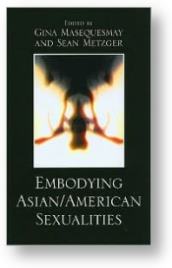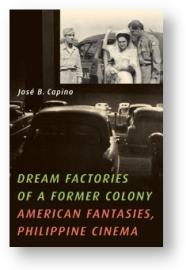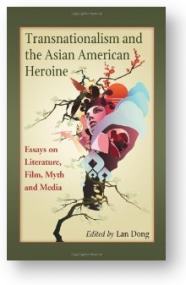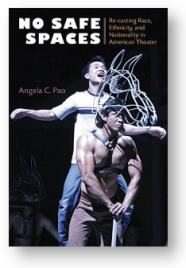November 23, 2010
Written by C.N.
New Books: Asian Americans in Media & Popular Culture
As part of this blog’s mission of making academic research and data more easily accessible, understandable, and applicable to a wider audience and to practical, everyday social issues, I highlight new sociological books about Asian Americans and other racial/ethnic groups as I hear about them. A book’s inclusion is for informational purposes only and does not necessarily mean a full endorsement of its contents.
The topic of how Asians and Asian Americans are portrayed in the mainstream media and popular culture continues to be a hot topic of discussion and debate among Asian Americans and non-Asians as well. The following books shed some more light on this complex and multidimensional issue.
Embodying Asian/American Sexualities, by Gina Masequesmay (Lexington Books)

This volume highlights materials that receive little academic attention such as works on Southeast Asian migrants, mixed race cultural production, and Asian/American pornography. As an interdisciplinary anthology, this collection weaves together various forms of “knowledge”—autobiographical accounts, humanistic research, community-based work, and artistic expression. Responsive to the imbrication of knowledge and power, the authors aspire to present a diverse sample of discourses that construct Asian/American bodies. They maintain that the body serves as the primary interface between the individual and the social, yet, as Elizabeth Grosz noted over a decade ago, feminist theory, and gender and sexuality studies more generally, “has tended, with some notable exceptions, to remain uninterested in or unconvinced about the relevance of refocusing on bodies in accounts of subjectivity.” This volume attempts to address this concern.
Dream Factories of a Former Colony: American Fantasies, Philippine Cinema, by Jose B. Capino (University of Minnesota Press)

Philippine cinema, the dream factory of the former U.S. colony, teems with American figures and plots. Local movies feature GIs seeking Filipina brides, cold war spies hunting down native warlords, and American-born Filipinos wandering in the parental homeland. The American landscape furnishes the settings for the triumphs and tragedies of Filipino nurses, GI babies, and migrant workers.
By tracking American fantasies in Philippine movies from the postindependence period to the present, José B. Capino offers an innovative account of cinema’s cultural work in decolonization and globalization. Capino examines how a third world nation’s daydreams both articulate empire and mobilize against it, provide imaginary maps and fables of identity for its migrant workers and diasporan subjects, pose challenges to the alibis of patriarchy and nationalism, and open up paths for participating in the cultures of globality.
Through close readings of more than twenty Philippine movies, Capino demonstrates the postcolonial imagination’s vital role in generating pragmatic and utopian visions of living with empire. Illuminating an important but understudied cinema, he creates a model for understanding the U.S. image in the third world.
Hollywood Goes Oriental: CaucAsian Performance in American Film, by Karla Rae Fuller (Wayne State University Press)

“Too often Hollywood cinema is reduced to a homogenized product. Fuller, while primarily tracing consistencies within the Hollywood product, also traces the heterogeneous nature of Hollywood’s output. Thus, she not only chooses Films in which Oriental characters are played by non-Orientals but has discovered Films in which the issues of disguise, masquerade, and even stereotyping are central.”
-– Tom Gunning, professor of cinema and media studies at the University of Chicago“Fuller’s study of images of Asian Americans in film takes an insightful approach by examining the practice of performances in ‘yellowface’: white (or in rare cases, black) actors portraying Asian characters. Hollywood Goes Oriental makes a substantial contribution to the literature in Asian American studies.”
— Frank H. Wu, chancellor and dean at the University of California Hastings College of the Law“Fuller’s discussion of cross-ethnic performance in Hollywood Films is long overdue. She adds valuable insights Go Film studies, ethnic studies, and gender studies, while her use of performance theory in the analysis in which ethnicity is viewed as a social construct that is expressed through the body–points to the possibility of new perspectives.”
— Jenny Lau, professor of cinema at San Francisco State University.

Transnationalism and the Asian American Heroine: Essays on Literature, Film, Myth and Media, edited by Lan Dong (McFarland Publishing)
This collection examines transnational Asian American women characters in various fictional narratives. It analyzes how certain heroines who are culturally rooted in Asian regions have been transformed and re-imagined in America and have played significant roles in Asian American literary studies as well as community life. The interdisciplinary essays display refreshing perspectives in Asian American literary studies and transnational feminism from four continents.
No Safe Spaces: Re-casting Race, Ethnicity, and Nationality in American Theater, by Angela C. Pao (University of Michigan Press)

No Safe Spaces looks at one of the most radical and enduring changes introduced during the Civil Rights era — multiracial and cross-racial casting practices in American theater. The move to cast Latino/a, African American, and Asian American actors in classic stage works by and about white Europeans and Americans is viewed as both social and political gesture and artistic innovation. Nontraditionally cast productions are shown to have participated in the national dialogue about race relations and ethnic identity and served as a source of renewed creativity for the staging of the canonical repertory.
Multiracial casting is explored first through its history, then through its artistic, political, and pragmatic dimensions. Next, the book focuses on case studies from the dominant genres of contemporary American theater: classical tragedy and comedy, modern domestic drama, antirealist drama, and the Broadway musical, using a broad array of archival source materials to enhance and illuminate its arguments.
Author Citation
Copyright © 2001- by C.N. Le. Some rights reserved. 
Suggested reference: Le, C.N. . "New Books: Asian Americans in Media & Popular Culture" Asian-Nation: The Landscape of Asian America. <https://www.asian-nation.org/headlines/2010/11/new-books-asian-americans-media-popular-culture/> ().
Short URL: https://www.asian-nation.org/headlines/?p=1674
Tags:
Translate Into Another Language![]()
